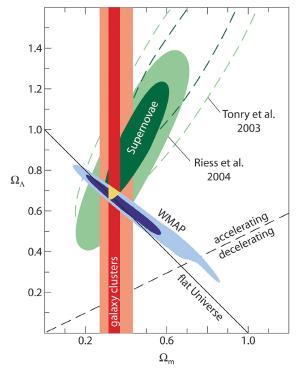Blog
Inherent in the System
17 December 2013
Suppose you wanted to know the room dimensions of a new apartment you’ve just rented. So you buy a new tape measure (your old one is still packed) and start measuring rooms. When you move your furniture in, you find that things fit pretty well, but it there are some things that are just slightly…off. That dresser you thought would fit perfectly in a nook is just a half-inch too long. The built-in shelf that should be long enough to hold your entire DVD collection just isn’t able to fit that last DVD. The difference isn’t huge, but just enough to be annoying.
Of course you measured all your furniture with your old tape measure, so when you finally unpack everything you go back and measure your furniture again, and get the same measurements you had originally. So you use your old tape measure to measure the apartment, and you get slightly different measurements than you did with the new tape measure. It turns out the two different tape measures differ very slightly, and that is why everything seemed just slightly off.
 ESO
ESOSince your two tape measures don’t quite agree, you know that at least one of them is slightly wrong. You might say there is an error inherent to our system of measurement. Of course figuring out which one has the error is a bit of a challenge. This is basically the situation we have in cosmology. We’ve measured the size and age of our universe really precisely using different methods, and we get answers that agree really well, but they also disagree just slightly enough to be annoying.
There are three broad observations we can use to understand the structure of the cosmos: the cosmic microwave background which is a measure of the remnant heat of the big bang, the baryon accoustic oscillation which is a measure of the distribution and clumping of galaxies in the universe, and the observations of distant supernovae.
Each of these gives slightly different results for the various cosmological parameters that describe the universe. For example, in the figure above the results of these three methods are plotted for the amount of matter (horizontal) versus dark energy (vertical). Here WMAP is the cosmic microwave background data.
These results overlap in a small region (denoted by the yellow triangle). All of these methods demonstrate that we live in a 13.7 billion year old universe that contains matter, dark matter and dark energy. They all generally agree. But you’ll also notice that the “center” of each type of observation is slightly different than all the others. Not much, but just enough to be irksome.
This tension between the different parameters limits our ability to further refine our measurement of the cosmological parameters. Though in some ways it is amazing that our results agree as well as they do. After all, we are making all of our observations in a dusty corner of a galaxy. Accounting for all that stuff in the way is a serious challenge, and it takes a lot of data analysis.